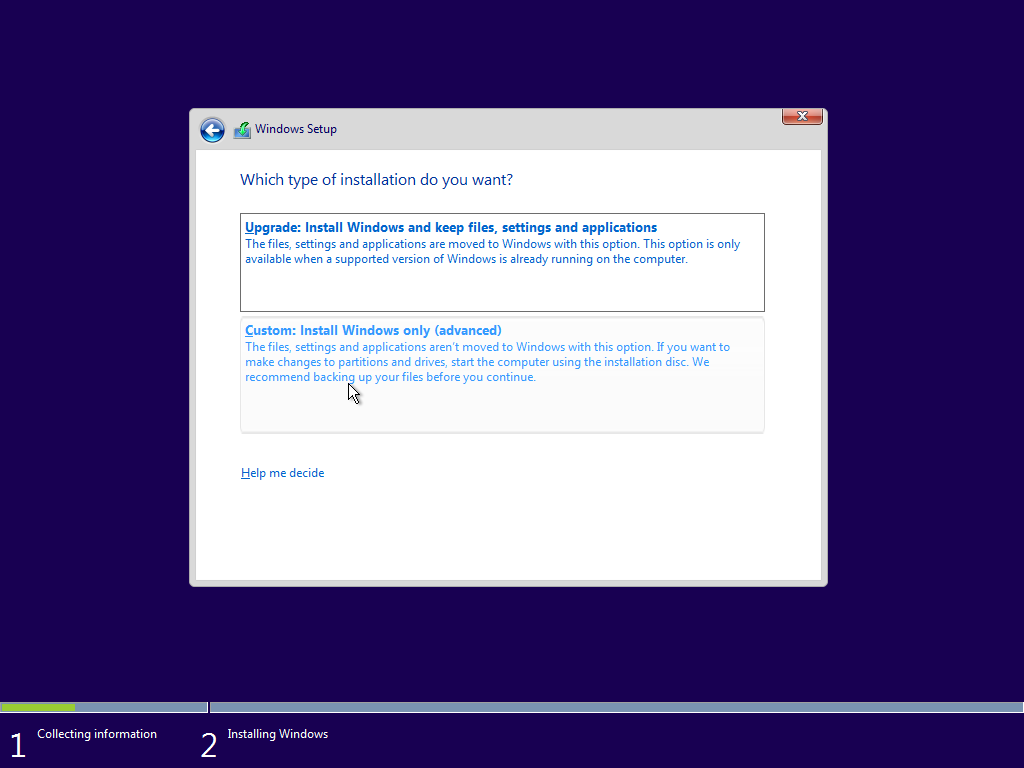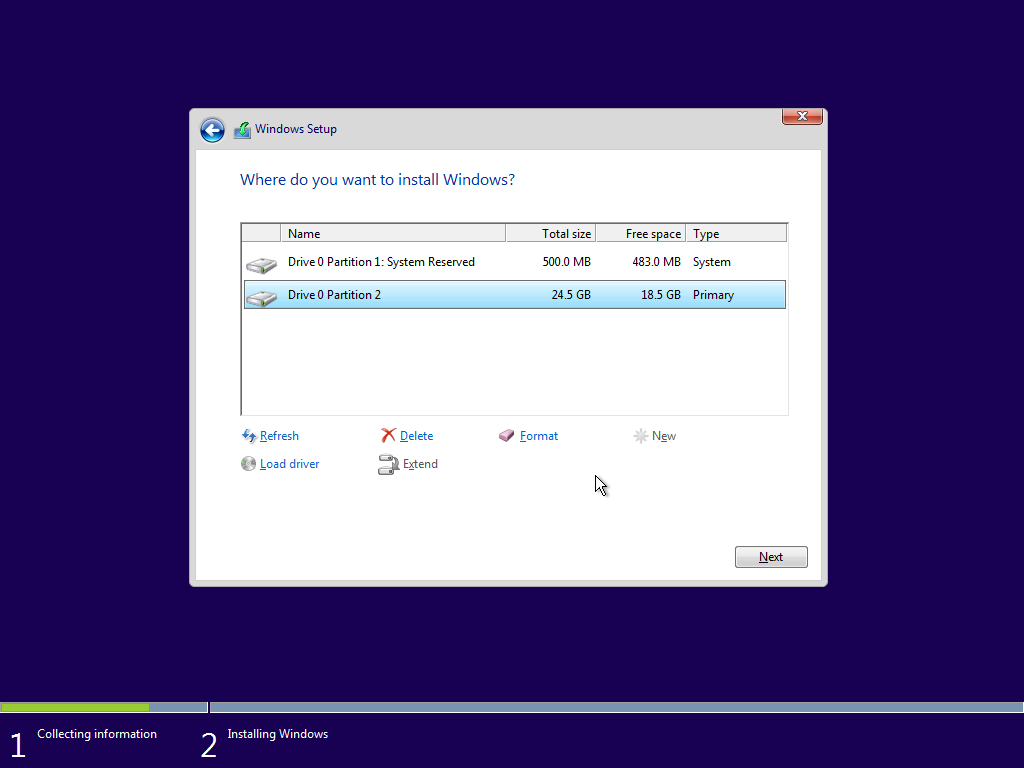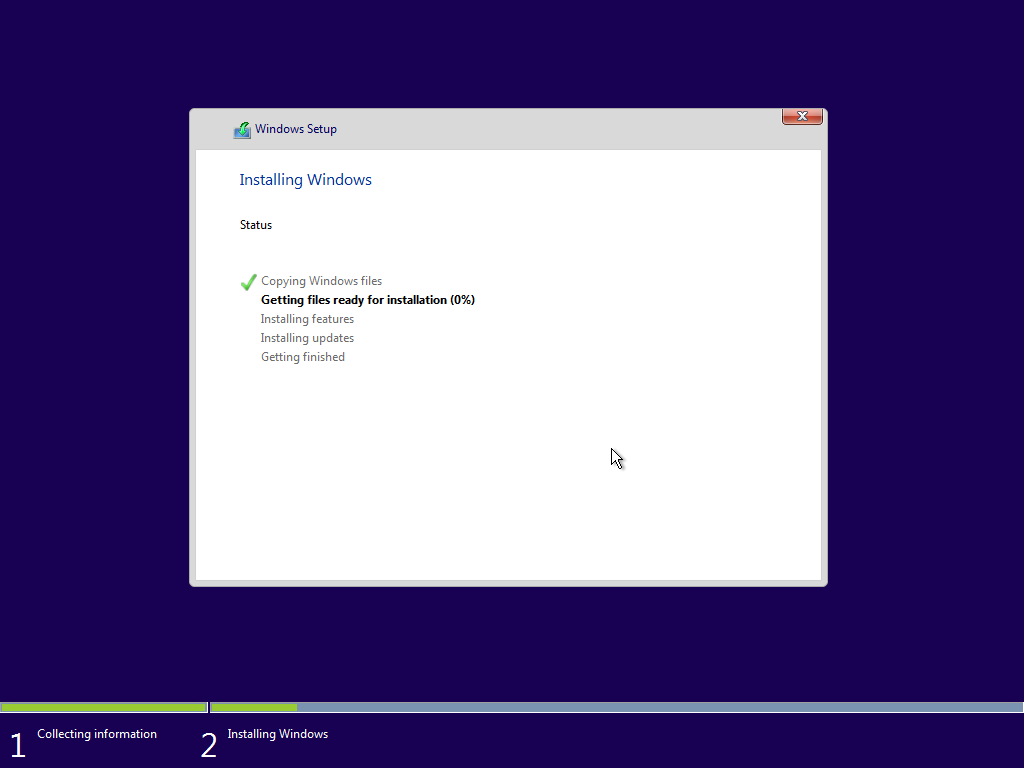Resetting Your Windows PC
It is actually easy that this blog post can be useless
12 Sep 2017
Back to blog
I felt the need to write this blog post because I am actually tired trying to convince people that “formatting” or “resetting” their Windows PC is actually easier than they thought. This is true to most people here at my place, and I really look forward to change that. Maybe linking them here would be a great initial step, perhaps? This entry is mainly targeting fellow Malaysians.
Easy money
One major disadvantage of not knowing that formatting or resetting can be done by yourself is that you will be most likely be used as an advantage by a repair shop. Not only you will lose quite a handful of time waiting for your device to be fixed, you will also find yourself paying quite a hefty amount for such a service. The technician will make use of the general public’s ignorance to gain more income on an easy process of formatting and resetting. Based on my researches, this amount is usually around RM50+.
Come to think about it, Windows 8 and later provides hell of an easier way to reset your Windows installation, and that is by a simple click of a button. This makes their work really easy, and at the same time able to enjoy the huge amount of payment for a relatively easy work. We haven’t yet taken into account applications that helps you install missing drivers. If the technicians also use this kind of applications, then you’ll realise they have saved themselves a ton of time and effort, for an unreasonable price tag.
Not to attack all repair shops, because I know many provide genuine repair services and do pricings reasonably with great deals (and that, I really appreciate the honesty and hope the bussiness will thrive!), I believe over-pricing a relatively easy thing to do is not a good choice to make, morally speaking. Shops that actually practice this behaviour should stop doing so and lower down their price for such services. Pity those pakcik makcik who just wants to use his/her laptop/desktop. Just because they know nothing that you do, doesn’t mean you should benefit by over-charging them.
Enough on ranting, I would also like to clear up some confusion between the term “format” and “reset”.
“Format” vs. “Reset”
Both convey apparent different meanings. “Format” refers to the action of preparing a storage device for use, which essentially wipes the content of the drive. “Reset” on the other hand means to put back something to its default or initial state. The term “format” is only used for storage devices, while term “reset” is applicable to any devices because the word is generic.
In the context of this blog post, to give a sense of meaning, “format” will cause the current installation of Windows along with your files to vanish. While “reset” will turn Windows into its initial state, removing all installed applications and their configurations, but your files. Kind of similar to that “Factory Reset” of phones.
“Reset”, although will preserve your files, you will also have the option to remove all your files and everything (as for Windows 10)!
“Reinstall”
Reinstall is different compared to the latter two. What it means is that you can actually reinstall a new Windows on top of the previous one, while also at the same time preserving your files. This action however does not preserve previous accounts and will also at the same time dissociate programs from the old operating system. Pretty much similar to the reset option.
Reset is different than reinstall as Windows will use its initial image (a one-to-one copy of itself) to restore the underlying system (in rare cases, Windows may require you to also insert an installation media to complete the reset process if Windows cannot restore on its own). Reinstalling will basically does the same thing, although with manual handling in addition of your own Windows copy (the installation media).
Which to choose?
In most cases, you would want to choose reset instead of format as this will give you the cleanest Windows possible without ever having to lose your files. Still, you can go for formatting if you don’t care about the files present on your PC. Sadly though, if you are using Windows 7, then no, there isn’t any way to reset your PC. You will have either format or reinstall.
If you are concerned about viruses, or your intention to format/reset was caused by the existence of viruses, it is best to reinstall the OS. But after installation, scan the User folder(s) in C:\Windows.old for viruses before moving your files from them.
In terms of difficulty, resetting your Windows takes far less effort and knowledge and will greatly save your time in comparison to formatting/reinstalling-on-top. This is because, in order to format, you will need to first find and download the installation media, burn them on to a disc or a flash drive, select the correct boot option in BIOS or UEFI settings, and then select the correct options on the Windows installer. Resetting on the other hand would only require you to click some things on the Windows Settings and then all you have to do is wait for things to complete. Another advantage of resetting is you get to keep your files and accounts.
How about drivers?
Doing any of this will of course remove any installed drivers and OEM softwares. Most drivers will be automatically reinstalled via Windows Update, but it is advised for you to be ready with the drivers for your PC before starting to do anything, so that you can easily set it up to be as performant as it should be right after resetting/formatting your PC.
If you are unable to find some drivers, then the Snappy Driver Installer may be the correct tool for the job. Still, I recommend official drivers from your computer's manufacturer website.
Resetting Windows
Resetting Windows is very easy. In a nutshell all you have to do is to open the Settings and go to the Reset section and click a button. For a slightly longer guide, here you go:
Windows 8/8.1
Open “PC Settings” and then click on “Update and Recovery” in the left sidebar

Then click on “Recovery” in the left sidebar. On your right side, choose your preferred “Reset” method. “Refresh” is the one you are looking for if you want to reset while also at the same time having your files intact. If you also want your files to be deleted, then you may choose the second method. Whichever suits your needs.

Then follow the on-screen instructions
Windows 10
Open “Settings” and then click on “Update and Security”. Then looking at the left sidebar, find and click “Recovery”. On the right pane, under “Reset this PC”, click the “Get Started” button to proceed to the process.

A new modal window will be summoned presenting you two options; “Keep my files” and “Remove everything”. You will now have to choose between the two and wait for the process to complete.

Then follow the on-screen instructions
Format / Reinstall
Requirements
To minimise this already long wall of text, if you want to format or reinstall Windows, you will need to find the installation media of the Windows version you are looking for. For ease, this website has it covered for you: https://tb.rg-adguard.net/. The files are fine, but if you are paranoid, you can actually search for them on Google.
To in order successfully burn the installation media on to your DVD or flash drive, you will need the “Windows USB/DVD Download Tool”. You can get this at Microsoft’s website.
To be able to boot into the installation media, you will need to change your BIOS/UEFI settings to prioritise another boot device instead of your hard drive.
Read more
Last but not least, you will need to determine on which partition your Windows is installed on. Open “My Computer” or “This PC” and inspect the C: drive’s total size (not free space). Jot down for later reference.
Now, on to the steps
First and foremost you must boot into the installation disk that you have made. When the screen prompts to press any to key to boot into the disc, please do so. Afterwards, the Windows logo will appear, and the computer will now load the setup files from your installation media.
You will need to choose the language that you desire and the keyboard layout that you are using. Then click on “Next”

Then click the big “Install now” button

If you are using Windows 7, you may skip to next paragraph! 😉 Enter your product key in the box provided. If you are using Windows 10, and you wish to enter your product key later after boot, you may click the “Skip” underlined text on the left of the “Next” button. Unfortunately for Windows 8/8.1, such a link is absent.

Read and accept the license terms.

On this screen, you will need to select the “Custom: Install Windows only (advanced)” button instead of the “Upgrade […]”. This is in-line with our intention to reinstall/format the computer.

Highlight by clicking the drive where you determined Windows is installed on. Afterwards, if you choose to Format, click the “Format” link right below the drives window. Otherwise you may proceed to click the “Next” button. Clicking format will summon a confirmation window, stating that you will lose your data. Acknowledge the consequences, and then click on “OK” if you agree, and then click the “Next” button to proceed.

Okay, you are done. You may leave the computer to set up itself. It will restart a several times before requiring your inputs.

Then all you have to do next is to follow the on-screen instructions in order to setup your newly installed operating system.
Conclusion
I always find myself in an awkward situation in ending a blog post. So… that’s just it, a quite compact guide for you to either format, reinstall or reset your Windows installation on your PC.
Since you are done and your Windows is fresh, it is advisable to always maintain the mint condition by avoiding useless applications, and be more careful on the internet so that you may not be infected by nasty stuff like malwares, adwares and worst, viruses.
I may in the near future post a newer blog entry guiding on how one can keep their Windows in pristine condition, so that you can use the same installation for a very long time with no issues and no sluggishness. People are not aware that the phrase “Prevention is better than cure” could also apply in the tech-world 😁.
Thank you for reading.
Published on:
Last edited:
Comments